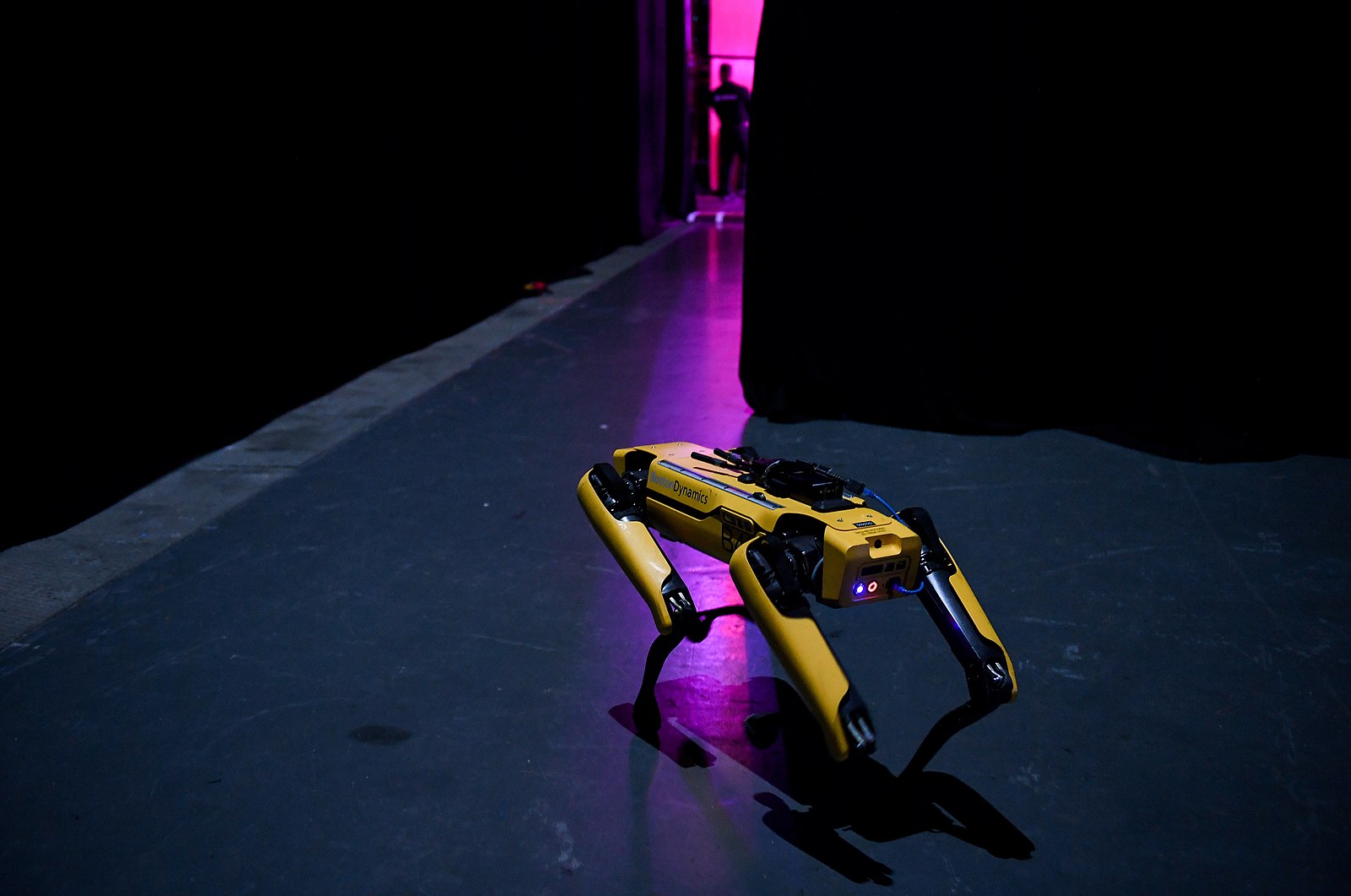As part of an exercise testing its new Advanced Battle Management System (ABMS), the U.S. Air Force tested small quadrupedal “dog” robots for perimeter defense and other tasks at Nellis Air Force Base, Nevada. The four-legged robots, built by Ghost Robotics, are designed to conduct remote inspections, surveillance, reconnaissance, mapping, and other missions.
Thanks for hosting us @NellisAFB
#defense #Defence #drones #military #Robots #QUGV pic.twitter.com/tPd1i0oj9Z
— Ghost Robotics (@Ghost_Robotics) September 4, 2020
According to Futurism, they could also be used to patrol air base perimeters. The Drive explains that the specific model tested at this ABMS test event is called the Vision 60, which Ghost Robotics refers to as a Quadrupedal Unmanned Ground Vehicle (Q-UGV).
While few details have been provided about the technologies tested on these Vision 60 robots, some ideas can be gleaned from photos. These images appear to show the “dogs” in various configurations based on their different arrays of visible sensors. As The Drive notes, some can be seen “with a pair of antennae on its back, and another with what appears to be a variety of sensors or communications equipment where its ‘head’ would be.”
According to the Ghost Robotics website, the Q-UGVs are nearly “unstoppable” and their modular design means they can execute a wide variety of missions. The website adds:
Strategic partners can build solution-specific [Quadrupedal Unmanned Ground Vehicles] for virtually any use-case with their choice of sensors, radios and even size the robot to suit specific requirements by licensing our reference designs.
Since bandwidth issues prevented an earlier test of the Vision 60 robots, notes The Drive, that hints that they are data-linked and can communicate with other systems. The Drive continues:
A ‘robot dog’ like this is also capable of carrying critical information gateways and computer systems that can better link those on the front lines with command and control assets far away, as was the case in this exercise. Even being able to continuously map their surroundings could alert human operators to unseen and potentially dangerous changes to their environment. With the modularity intrinsic to this design, one could image robot dogs outfitted to intercept and geolocate enemy communications or even being used to charge and neutralize threats, so humans don’t have to.
ABMS is a “digital battle network system designed to collect, process, and share data among U.S. and allied forces in real-time,” notes The Drive, and this ABMS test exercise was billed as one of the largest joint military technology experiments in recent history. The Drive reported that it included “65 government teams from every service including the Coast Guard, 35 separate military platforms, and 70 different industry partners. The exercise spanned 30 different geographic locations and four national test ranges.”
It isn’t known when these robot patrol dogs will be fielded with front line units, but a more interesting question might be – when will Terminator ‘attack dogs’ follow?
READ NEXT: Russia to Field ‘Terminator’ Robot Army by 2025 >>
Advertisement
Send the Next GOP SUPERSTAR Kim Klacik to Congress [ACT NOW]















